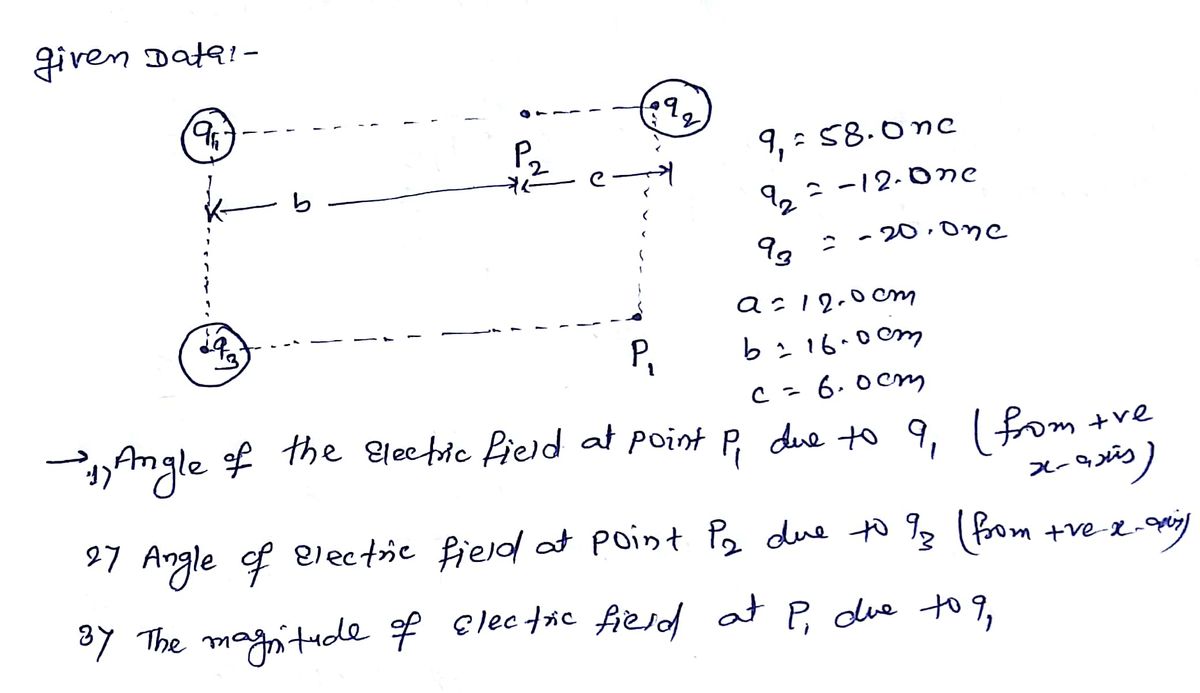In the figure shown below, three charges are places at the corners of a rectangle. Charges 9₁ and 92 are located in the upper left and right corners, respectively and charge q3 is places in the lower left corner. The separation distance of q₁ and q3 is the distance a. The lower right corner, which does not contain a charge, is labeled as point P₁. A second point, P2, is on the top side of the rectangle, a distance b from charge q₁ and c from charge q2. For this question, let q1 = 58.00000 nC, q2 = -12.00000 nC, q3= -20.00000 nC, a = 12.00000 cm, b = 16.00000 cm and c = 6.00000 cm. (If you wish to get correct answers, then be sure to use ke = 9.00000 x 10⁹ Nm²/C² and e = 1.60000 x 10-1⁹ C.) (9₁ a (93 b P₂ с P₁
1)The angle of the electric field at point P1 due only to q1, as measured from the positive x-axis, in degrees and to three decimal places, is
2)The angle of the electric field at point P2 due only to q3, as measured from the positive x-axis, in degrees and to three decimal places, is
3)The magnitude of the electric field at point P1 due to q1, in N/C and to one decimal place, is
4)The angle of the total electric field at point P1, as measured from the positive y-axis, in degrees and to three decimal places, is
5)A charge q4 is placed at point P1. If q4=420.00000 μC, the magnitude of the electric force acting on q4 due to the other charges, in N and to three decimal places, is

As per our company guidelines we are supposed to answer only first 3-sub part. Kindly repost other parts in next question.

Step by step
Solved in 3 steps with 3 images









